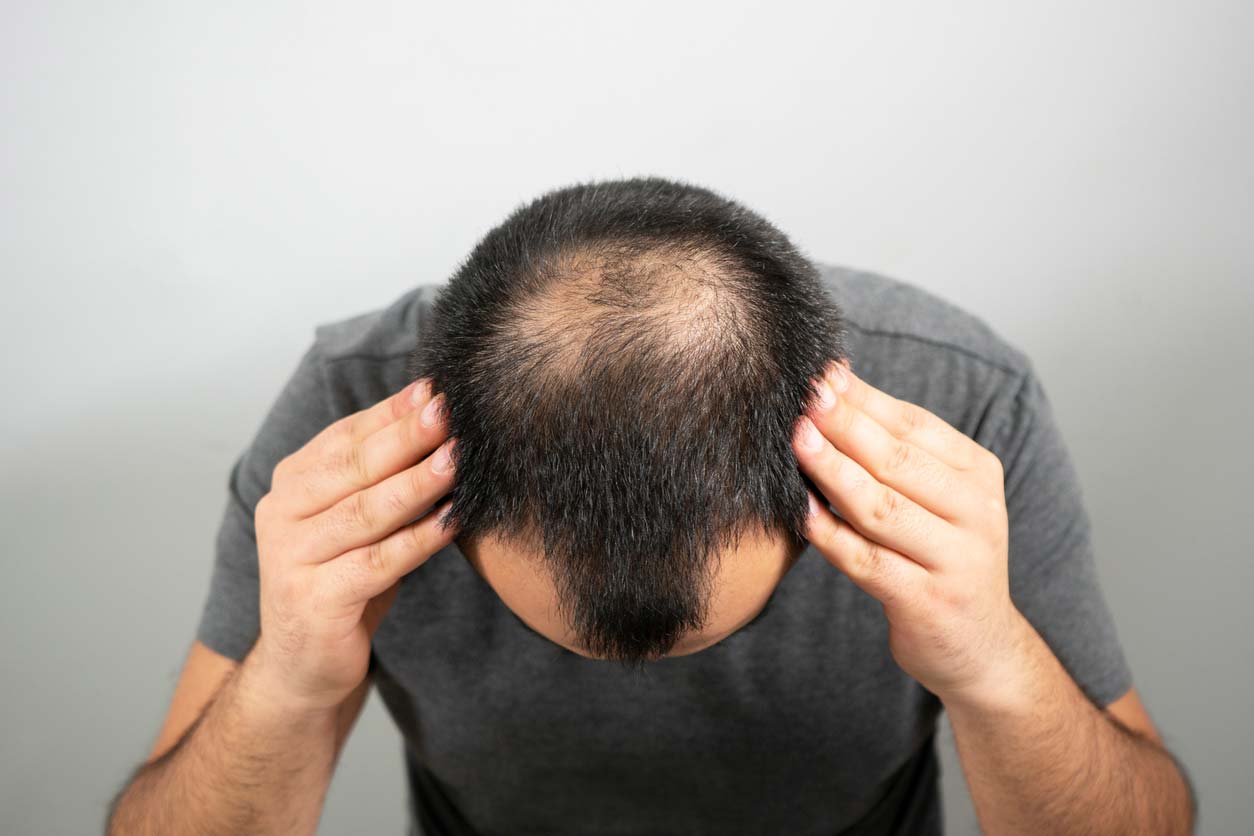Working Time
-
Mon - Sat :
10:00am - 01:00pm
05:00pm - 08:00pm
Contact Info
-
Phone: 7624008000
- recombhtc@gmail.com
Hair Loss in Male

Hair loss, medically termed alopecia, is a common condition where a person experiences thinning or complete loss of hair. While it can occur anywhere on the body, it most commonly affects the scalp. Hair loss in men, often referred to as male pattern baldness or androgenetic alopecia, typically follows a pattern of a receding hairline and thinning crown, eventually leading to partial or complete baldness. Hair loss can vary in severity and can affect men of all ages, though it is more prevalent with advancing age.
Causes of Hair Loss in Men
Aside from aging, here are some of the primary reasons for hair loss in men:
- Male Pattern Baldness
If you notice hair loss in an "M-shaped" or "U-shaped" pattern, it is referred to as male pattern baldness. In some cases, hair loss starts at the crown. This condition is either inherited, hormonal, or a combination of both. It is also known as androgenetic alopecia.
- Alopecia Areata
Alopecia areata is an autoimmune disorder where the body's immune system attacks healthy hair follicles, leading to hair loss.
- Trichotillomania
This condition involves a compulsive urge to pull out hair from the scalp, eyebrows, or other body areas.
- Stress
Severe physical or psychological stress can impact hair density, a condition known as telogen effluvium.
- Thyroid Disorders
Prolonged hypothyroidism or hyperthyroidism can lead to diffuse hair loss that affects the entire scalp rather than specific areas. Other illnesses can also trigger hair loss.
- Chemotherapy
During chemotherapy, men may experience gradual or sudden hair loss, which is usually temporary. Hair typically grows back within a few months. Various other medications can also cause hair loss.
- Infections
Scalp infections, such as ringworm, can result in hair loss, a phenomenon often observed in children.
Additionally, poor nutrition, significant weight loss, and an unhealthy lifestyle are also contributing factors to hair loss.
- Treatment Options Available for Hair Loss
Several treatment options are available for men experiencing hair loss, ranging from medical treatments to surgical procedures and lifestyle changes. The most common medical treatments include:
- Medications:
- Minoxidil (Rogaine): An over-the-counter topical treatment that stimulates hair growth and slows hair loss.
- Finasteride (Propecia): A prescription oral medication that reduces DHT levels, slowing hair loss and promoting hair regrowth
- Low-Level Laser Therapy (LLLT): A non-invasive treatment that uses red light to stimulate hair follicles and promote hair growth.
- Platelet-Rich Plasma (PRP) Therapy: Involves injecting platelets from the patient's own blood into the scalp to stimulate hair growth.
- Lifestyle and Dietary Changes: Improving diet, reducing stress, and avoiding hair-damaging practices can help manage and potentially reduce hair loss. A diet rich in vitamins and minerals, particularly iron, zinc, and vitamins A and D, supports healthy hair growth.
- Scalp Micropigmentation: A cosmetic procedure that creates the appearance of a fuller head of hair by tattooing small dots on the scalp.
Men experiencing hair loss should consult a healthcare professional to determine the most appropriate treatment based on their specific condition and overall health.


